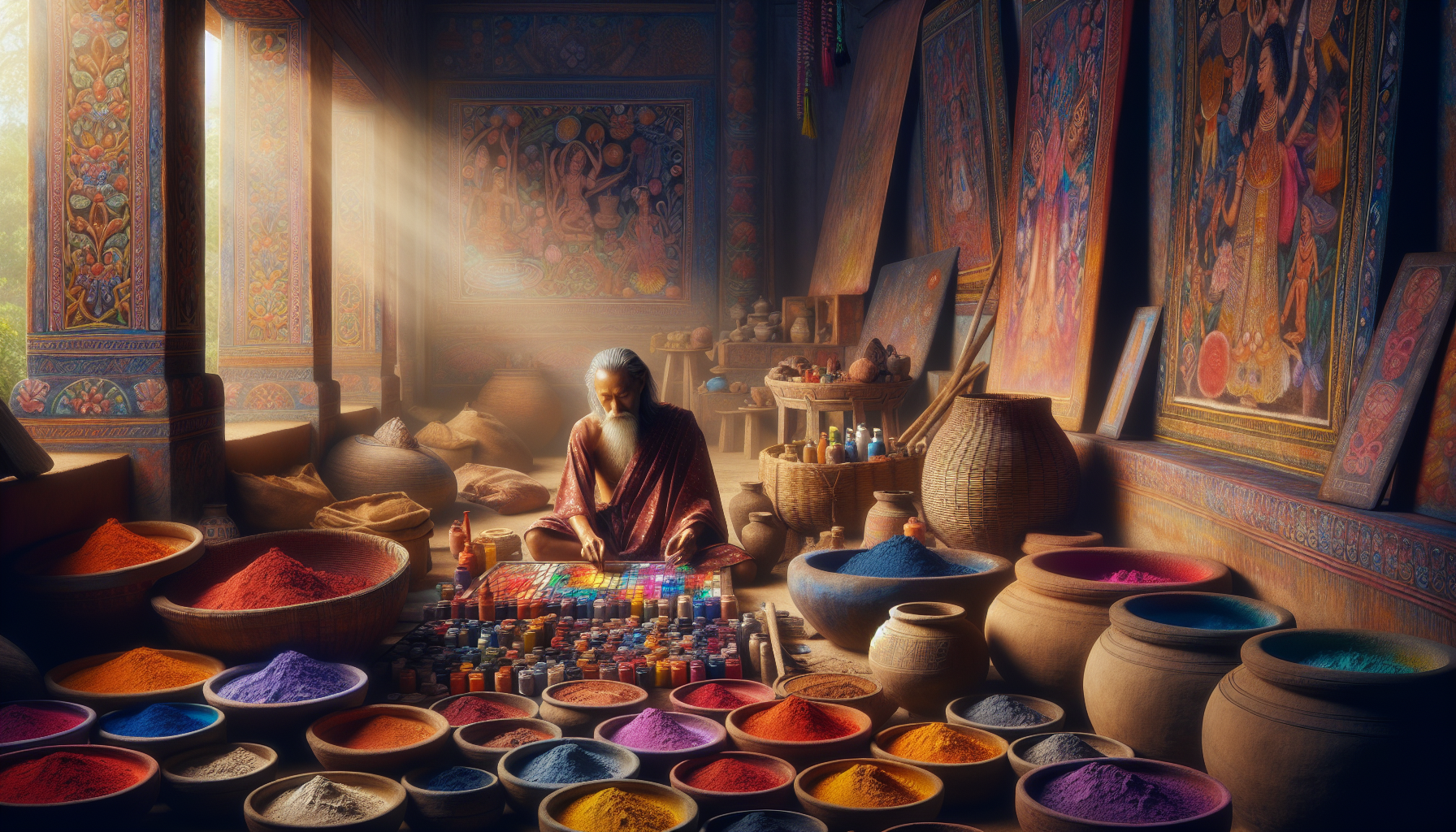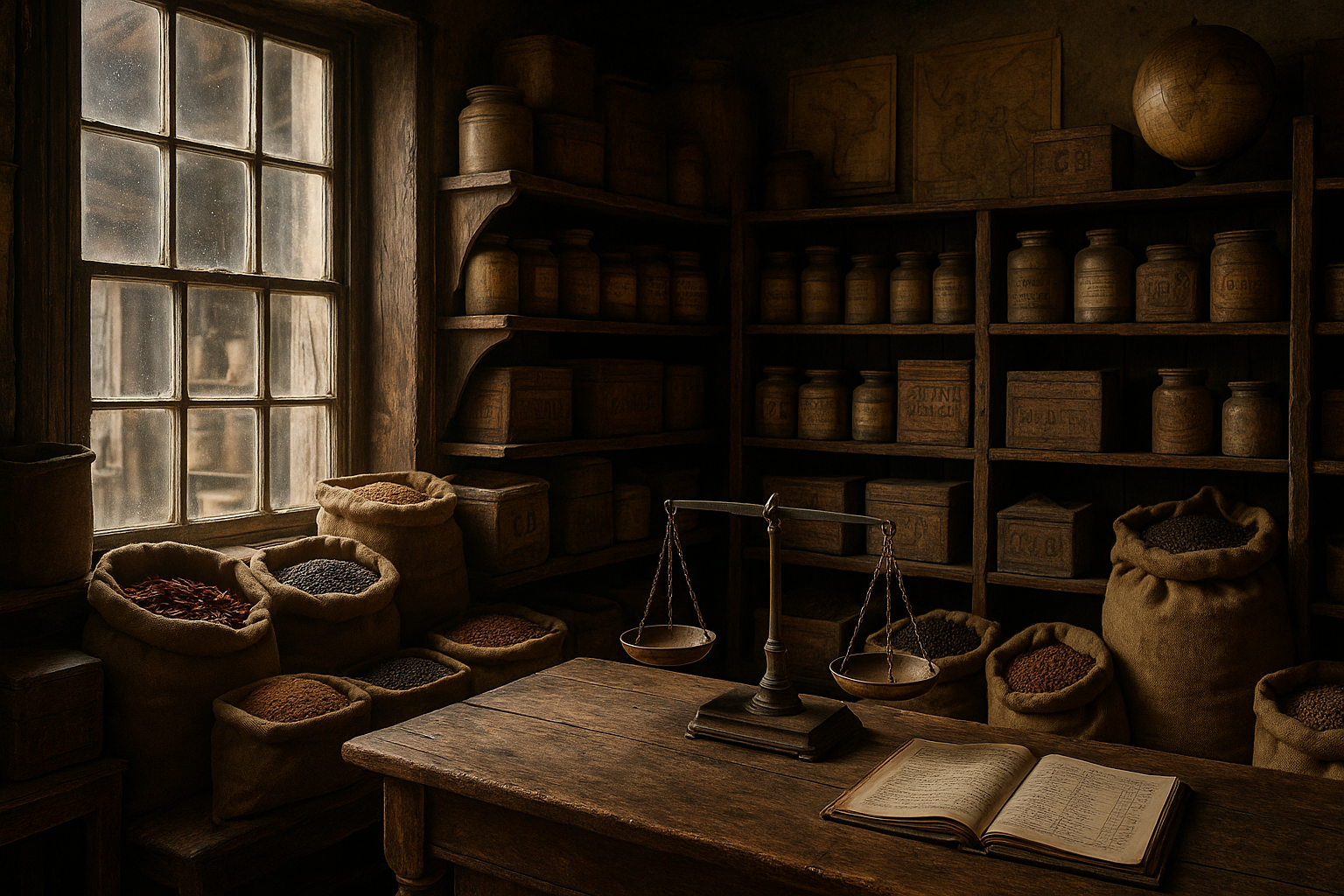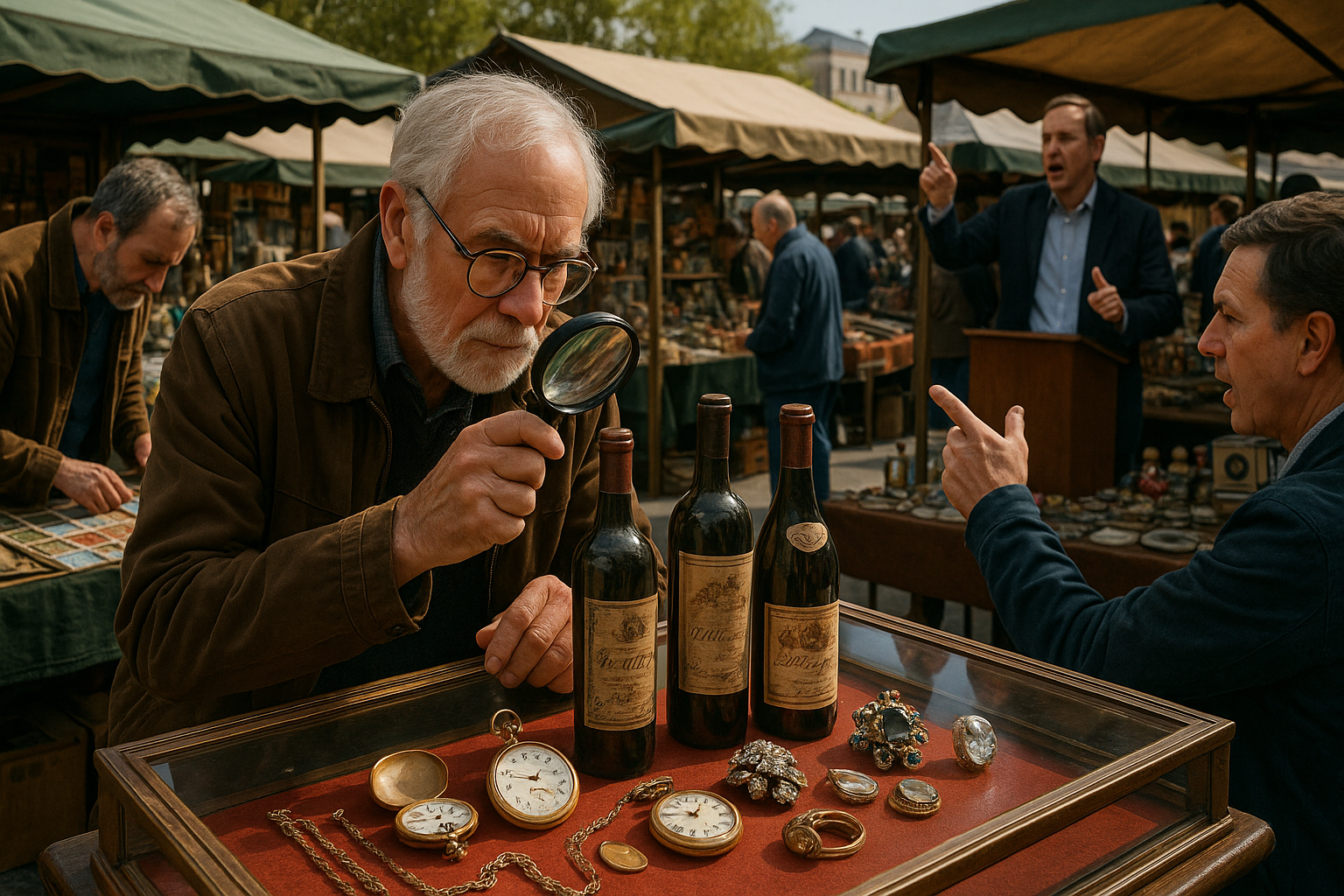In a world awash with color, where every hue tells a story, have you ever paused to consider the ancient roots of this vibrant tapestry? 🌈 From the deep indigos of the Phoenicians to the sacred reds of the Egyptians, the choices of color by ancient civilizations were far from arbitrary. These colors were more than mere visual stimuli; they were laden with meaning, purpose, and profound symbolism. Today, as we delve into the rich palette of history, we uncover how these early societies meticulously selected hues not just for aesthetic beauty, but to convey messages, evoke emotions, and fulfill spiritual needs. The art of color in antiquity was a sophisticated language, a chromatic dialogue that transcended borders and epochs. It was a crucial tool in the hands of artisans, leaders, and spiritual guides, all of whom understood its power to influence human thought and behavior.
In this exploration, we journey through time to unravel the secrets behind color selection in various ancient cultures. Our first stop takes us to the banks of the Nile, where Egyptian artisans adorned tombs and temples with vibrant blues and golds, each shade a testament to their beliefs in the afterlife and divine kingship. We then traverse the Mediterranean to the heart of Greece, where philosophers pondered not only the aesthetics of colors but their moral and psychological impacts, influencing Western thought for millennia. As we venture further, we encounter the mystical lands of India and China, where colors held cosmic significance, guiding rituals and spiritual practices. Along the way, we will uncover how the natural world served as an inexhaustible palette, offering dyes and pigments that became synonymous with identity and tradition.
Our colorful odyssey does not stop at mere historical analysis. We will also explore the intricate processes these civilizations employed to create their pigments, revealing a marriage of art and science that was centuries ahead of its time. By understanding the context and significance of these colors, we gain insights into the human psyche and cultural priorities of the ancients. This article invites you to see the world through ancient eyes, appreciating the profound legacy of color that has shaped, and continues to influence, our perceptions and artistry today. So, prepare to immerse yourself in a world where color is not just seen, but deeply felt, a vivid narrative woven into the very fabric of human history.
The Significance of Color in Ancient Cultures
Color has played a crucial role in the expression and communication of human experiences throughout history. Ancient cultures, in particular, have demonstrated an acute awareness and understanding of color, using it as a tool for symbolic representation, spiritual beliefs, and societal norms. These early societies recognized the power of color to convey emotions, establish identities, and influence perceptions. The meticulous selection of hues and their applications in art, architecture, and clothing have left a lasting impact on how we perceive color today.
One of the most prominent ancient civilizations, the Egyptians, regarded color as a significant aspect of their spiritual and daily lives. They believed that colors possessed intrinsic properties that could affect both the material and spiritual worlds. The color blue, for instance, was associated with the sky and the Nile River, symbolizing life and rebirth. Green represented fertility and regeneration, often linked to the god Osiris. These associations were not merely symbolic but were also integrated into their artistic and architectural endeavors. Hieroglyphs, tomb paintings, and temple decorations were meticulously crafted using a palette of colors that held specific meanings, thus enriching the narrative and function of the artworks.
In contrast, the ancient Greeks approached color from a more philosophical perspective. They were fascinated by the relationship between color, light, and perception. Philosophers like Plato and Aristotle explored the nature of colors, attempting to understand their essence and how they could influence human emotions and actions. The Greeks’ use of color in their art and architecture was closely tied to their belief in harmony and balance. The Parthenon, for instance, was adorned with vibrant colors that have faded over time, yet recent studies have revealed the original polychromy that contributed to its grandeur and symbolic significance.
The Role of Color in Religious Practices
Religion and spirituality have been integral aspects of ancient cultures, and color played a vital role in these domains. In India, for example, colors have deep spiritual meanings tied to Hinduism. The color saffron is sacred and represents purity and asceticism. It is commonly used in religious ceremonies and is a prominent color in the attire of Hindu monks. Similarly, red is associated with the goddess Durga and symbolizes power and protection, often worn during significant life events such as weddings.
The ancient Chinese civilization also attributed profound meanings to colors within their spiritual practices. The Five Elements Theory, which includes wood, fire, earth, metal, and water, corresponds to specific colors: green, red, yellow, white, and black. These colors were used to balance energies and bring harmony to various aspects of life. Moreover, red, a color denoting happiness and prosperity, was extensively used in festivals and ceremonies, including the Chinese New Year, to ward off evil spirits and bring good fortune.
In Mesoamerican cultures, such as the Maya and Aztecs, colors were pivotal in religious rituals and symbolism. The color blue, often associated with the god Chaac, was believed to bring rain and fertility. This color was not only used in ceremonial contexts but also in the vibrant frescoes and pottery that depicted their mythology and cosmology. The careful selection and application of colors in religious contexts across ancient cultures reveal a sophisticated understanding of how hues could influence the divine and the mundane.
Color in Social and Political Contexts
Beyond spirituality, colors were powerful tools in social and political realms. They were employed to denote status, power, and affiliations within society. In ancient Rome, for example, the color purple was reserved for the elite, specifically the emperor, due to its rarity and costliness. The dye, extracted from the murex snail, was a symbol of wealth and authority, and its use was strictly regulated.
In ancient Egypt, color played a role in distinguishing social classes and professions. The use of certain colors in clothing and adornments was a visual indicator of one’s status and occupation. This societal structure was reflected in their art, where specific colors were used to depict individuals of different ranks and roles. The symbolic use of color served to reinforce the established social hierarchy and communicate societal values to the populace.
In the ancient Inca Empire, color was intertwined with their political structure and administration. The Incas used a system of knotted cords known as quipus to record information, including census data, taxes, and even narratives. Each color of the cord represented different categories of information, allowing for a complex and efficient means of communication and governance. This innovative use of color demonstrates the sophistication of their administrative systems and the role of color in facilitating order and cohesion within their society.
Color in Art and Architecture
The influence of color in ancient art and architecture cannot be overstated. It was used not only for aesthetic purposes but also as a means of conveying messages and invoking emotions. The vibrant frescoes of the Minoans, found in the Palace of Knossos, illustrate the importance of color in depicting their mythological and everyday scenes. The use of contrasting hues and dynamic compositions imbued their art with a sense of life and movement, capturing the essence of their vibrant culture.
The ancient Persians, known for their intricate and colorful mosaics, used color to reflect the grandeur and divine nature of their empire. The Apadana Palace in Persepolis, with its richly decorated walls, showcased the opulence and power of the Persian kings. The use of color in these mosaics was not arbitrary but was carefully chosen to enhance the visual impact and convey the intended messages of power and divinity.
Furthermore, the symbolic use of color extended to ancient textiles and crafts. The intricate weavings and pottery of the Andean cultures, such as the Nazca and Paracas, used bold colors and patterns to tell stories and convey cultural narratives. These artifacts provide valuable insights into their beliefs, societal structures, and interactions with the environment, highlighting the multifaceted role of color in their daily lives.
Understanding Ancient Palettes and Techniques
The methods and materials used by ancient cultures to create colors reveal a deep understanding of natural resources and chemistry. The Egyptians, for instance, mastered the art of creating pigments from minerals and organic materials. The famous Egyptian blue, one of the earliest synthetic pigments, was made from a combination of silica, copper, and calcium compounds. This innovation allowed them to achieve a stable and vibrant blue that adorned many of their artifacts and structures.
The Romans, inheriting knowledge from the Greeks and Egyptians, expanded their palette by developing a variety of pigments and dyes. The use of cinnabar for red, malachite for green, and ochre for yellow and brown highlights their expertise in extracting and processing natural resources. These pigments were used in frescoes, mosaics, and sculptures, enhancing the visual appeal and durability of their artworks.
In Asia, the art of creating dyes and pigments was equally sophisticated. The Chinese developed intricate techniques for producing vivid reds and blues using plant extracts and minerals. The color vermilion, derived from cinnabar, was a favorite in their art and literature, symbolizing life and immortality. These techniques were passed down through generations, contributing to the rich tapestry of Asian art and culture.
Innovations and Influence on Modern Color Theory
The legacy of ancient color practices has had a profound influence on modern color theory and practices. The principles and techniques developed by ancient cultures laid the foundation for the scientific exploration of color in the Renaissance and beyond. The works of artists and scientists such as Leonardo da Vinci, Isaac Newton, and Johann Wolfgang von Goethe were inspired by the understanding and appreciation of color from these early societies.
In contemporary times, the study of ancient color practices has led to a renewed interest in natural dyes and sustainable art practices. Artists and designers are increasingly looking to ancient techniques for inspiration, seeking to revive traditional methods and create environmentally conscious works. This movement not only honors the ingenuity of ancient cultures but also addresses modern concerns about sustainability and ecological impact.
The enduring fascination with color and its significance in human culture continues to inspire and challenge artists, scientists, and historians alike. By exploring the rich tapestry of ancient color practices, we gain valuable insights into the interconnectedness of art, science, and society, shaping our understanding of the world and our place within it.
Exploring Further
If you are interested in learning more about how ancient cultures utilized color, consider exploring additional resources such as books, documentaries, and online courses. One recommended video is titled “The History of Colors in Ancient Art” by the channel “Art History Online.” This video delves into the various applications and meanings of color across different ancient cultures, providing visual examples and expert commentary.
Additionally, consider exploring museums with extensive collections of ancient artifacts, where you can see firsthand the vibrant colors that have withstood the test of time. Engaging with these resources will deepen your appreciation for the artistry and symbolism of color in ancient cultures, enriching your understanding of their enduring legacy.
| Culture | Significant Colors | Symbolism |
|---|---|---|
| Egyptian | Blue, Green, Red | Life, Fertility, Power |
| Greek | White, Red, Gold | Purity, Valor, Divinity |
| Chinese | Red, Yellow, Black | Happiness, Royalty, Wisdom |
| Mayan | Blue, Red, Green | Rain, Blood, Nature |
We hope this exploration into the art of color in ancient cultures has provided you with a new perspective on how these civilizations shaped the world through their vibrant palettes. 🌈

Conclusion
In conclusion, the intricate relationship between color, culture, and symbolism is a testament to the creativity and depth of human expression across centuries. This exploration into the art of color has unveiled how ancient cultures meticulously selected hues to convey profound meanings, whether in their art, architecture, clothing, or rituals. The journey through the vibrant landscapes of Egypt, China, India, and the Americas showcases the universal yet uniquely tailored use of color, highlighting how each civilization’s choices were deeply rooted in their beliefs, environment, and societal norms.
From the ancient Egyptians, who harnessed the power of color to emphasize the divine and the eternal, to the Chinese, who meticulously aligned their color choices with philosophical and cosmological beliefs, the historical significance of color is undeniable. For the Egyptians, colors like blue and gold symbolized the heavens and the divine, which is evident in their intricate artifacts and tomb paintings. The Chinese, on the other hand, often used red as a symbol of prosperity and good fortune, a tradition that continues to resonate in their cultural festivities and traditional attire. Explore more about ancient Egyptian color symbolism here and discover the cultural significance of colors in China.
In India, the spectrum of color is as diverse as its culture, where every hue has its own narrative and place in the social and religious fabric. The use of vibrant colors in festivals like Holi underscores the celebration of life and victory of good over evil. Similarly, the indigenous cultures of the Americas, from the Mayans to the Native American tribes, utilized natural pigments to create art and ceremonial objects that were deeply spiritual and reflective of their relationship with nature.
Understanding the historical context of color selection and symbolism not only enriches our appreciation of ancient art and culture but also provides valuable insights into how we can apply these principles in modern design. Color remains a powerful tool for communication, capable of evoking emotions and conveying messages beyond words. Designers and artists today can draw inspiration from these ancient traditions to create works that are not only aesthetically pleasing but also rich in meaning and cultural resonance.
As we reflect on the enduring legacy of color in cultural expression, it’s crucial to recognize the importance of preserving and studying these ancient practices. By doing so, we not only honor the artistic achievements of past civilizations but also ensure that their wisdom continues to inspire future generations. The art of color is a vibrant thread that connects us to our history, and its exploration is a journey that offers endless possibilities for creativity and understanding.
We encourage you, dear reader, to delve deeper into this fascinating topic. Explore how color influences your own life and work. Consider how you might incorporate the lessons from ancient cultures into your own design practices, whether through thoughtful color selection or by creating spaces that resonate with symbolic meaning. Share your insights and experiences with others, sparking discussions that continue the exploration of color as a universal language. 🌈
Feel free to share this article with friends and colleagues who might find this exploration of ancient color symbolism as captivating as you did. Your engagement helps keep the conversation alive, allowing us all to appreciate the richness of our cultural heritage and its influence on contemporary design. If you have thoughts or insights you’d like to share, we invite you to leave a comment below. Let’s continue this colorful dialogue together.
Toni Santos is a visual poet and botanical dreamweaver, archiving the ephemeral beauty of dreams through nature’s delicate language.
In his artistic universe, every petal, vine, and root becomes a memory—an echo from the subconscious—preserved in time like pages from an ethereal journal. Toni treats plants not just as living beings, but as dream-symbols: vessels of forgotten feelings, silent wishes, and secret stories waiting to unfold.
His work is rooted in the belief that nature holds the vocabulary of dreams. Through botanical compositions, symbolic floral creations, and enchanted visual studies, he gives form to the unseen — the moment between sleep and wakefulness, where memory fades and imagination begins.
As the visionary behind Vizovex, Toni curates collections that feel like fragments of a dreamscape: moss-filled glass jars, mythic flowers, ancient botanical symbols reimagined. These creations invite you to explore your inner worlds and reawaken your sense of wonder.
His work is a tribute to:
The dreamlike language of plants and natural symbols.
The quiet messages found in forgotten moments.
The art of recording the soul’s memories in organic form.
Whether you’re a seeker of meaning, a lover of myth, or someone who drifts between the symbolic and the real, Toni welcomes you to explore an archive of dreams — one petal, one relic, one timeless whisper at a time





